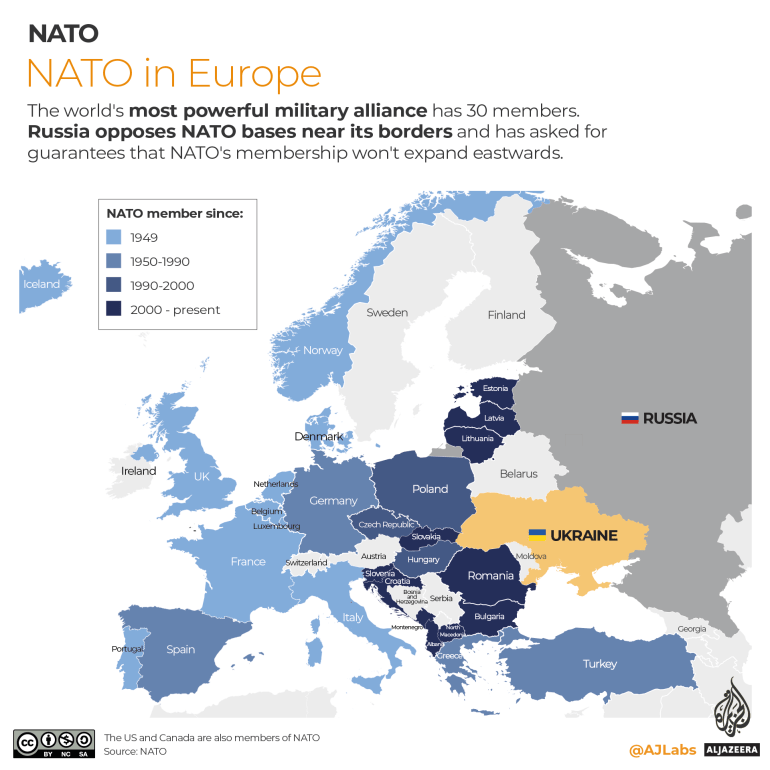Infographic: Military capabilities of Russia and Ukraine
As Russian forces advance into Ukraine, President Zelenskyy introduces martial law and tells troops to hold their ground.

Following months of tensions, Russian forces invaded Ukraine on Thursday morning with explosions heard across the country.
Russian troops are now advancing closer to Ukraine’s capital Kyiv as citizens seek shelter in metro and train stations.
Keep reading
list of 4 itemsMapping pro-Palestine college campus protests around the world
Satellite images reveal Israeli destruction of hospitals in Gaza
Mapping Israel-Lebanon cross-border attacks
In response, Washington and its allies have laid heavy sanctions on Russia, however Ukrainian President Volodymyr Zelenskyy has said it is not enough to deter Russia. On Friday, he told soldiers to stay strong and hold their ground.
In the following infographics, we explain how we got here and visualise the latest events on the ground.
Russia and Ukraine at a glance
Russia and Ukraine are the two largest countries in Europe. The neighbours were part of the 15 Soviet republics that made up the USSR. Following the collapse of the Soviet Union in 1991, Ukraine became an independent country and distanced itself from Russia.
In March 2014, following months of anti-government protests in Ukraine that saw a Kremlin-friendly leader removed from power, Russia invaded and annexed the Crimean Peninsula. A month later, pro-Russian separatists began capturing territory from the Donetsk and Luhansk regions of eastern Ukraine. The ongoing fighting there has killed more than 14,000 people, according to Kyiv, and displaced millions.
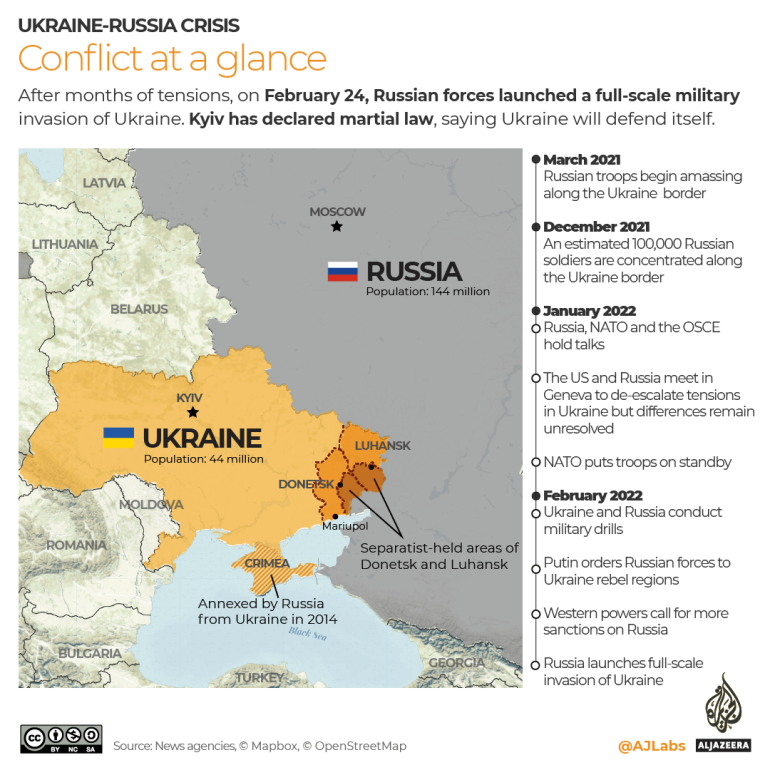
Timeline from Crimea to now
The graphic below highlights some key milestones since Russia annexed Crimea from Ukraine in 2014.
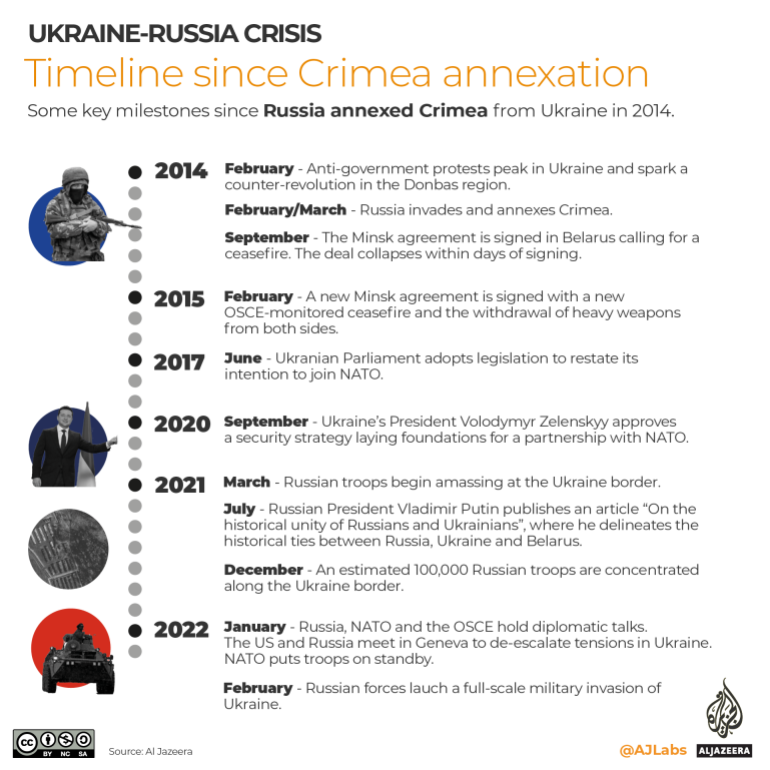
Where are Russian troops stationed?
Over the past months, Russia has built up its military along the border with Ukraine where an estimated 100,000 troops were concentrated earlier this year.
Russia’s defence ministry had said its forces were pulling back after military exercises earlier this month with Belarus. However, on February 24 Moscow launched a full-scale military invasion into Ukraine.
NATO chief Jens Stoltenberg has stated that NATO has made no plans of deploying troops to Ukraine.
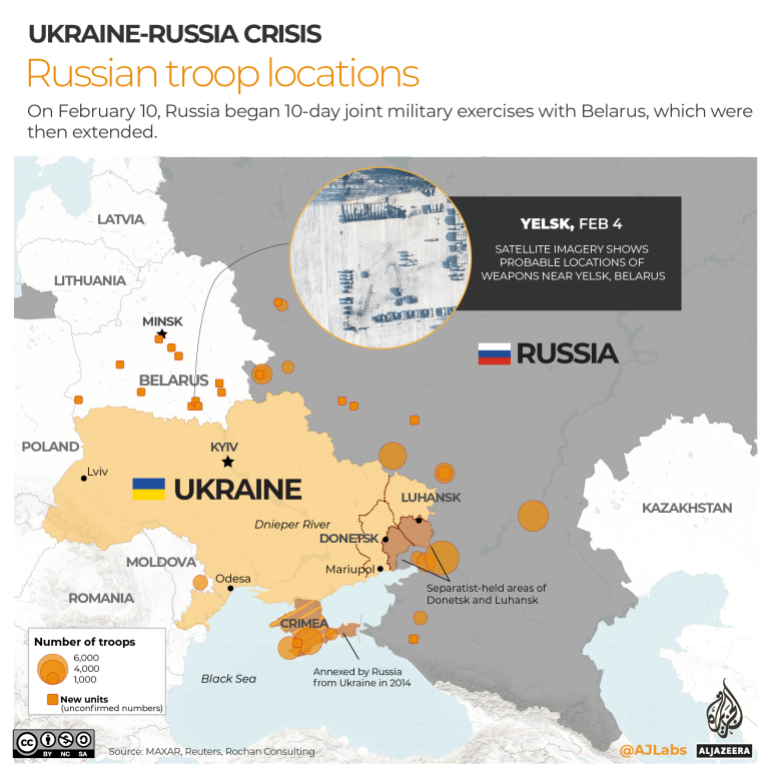
Military head-to-head
Russia has one of the most powerful militaries in the world. It ranks in the top five nations which spend the most on their military.
In 2020, Russia spent $61.7bn on its military which accounted for 11.4 percent of government spending. In comparison, Ukraine spent $5.9bn on its military or 8.8 percent of government spending according to the Stockholm International Peace Research Institute (SIPRI).
A number of countries have sent military equipment to Ukraine, including Javelin anti-tank missiles from Estonia and Stinger anti-aircraft missiles from Latvia and Lithuania. Kyiv is also using Turkish-made Bayrakhtar drones for reconnaissance
Ukraine also received shipments of weapons from the US as part of a $200m (£147.5m) defensive package approved by President Joe Biden in December.
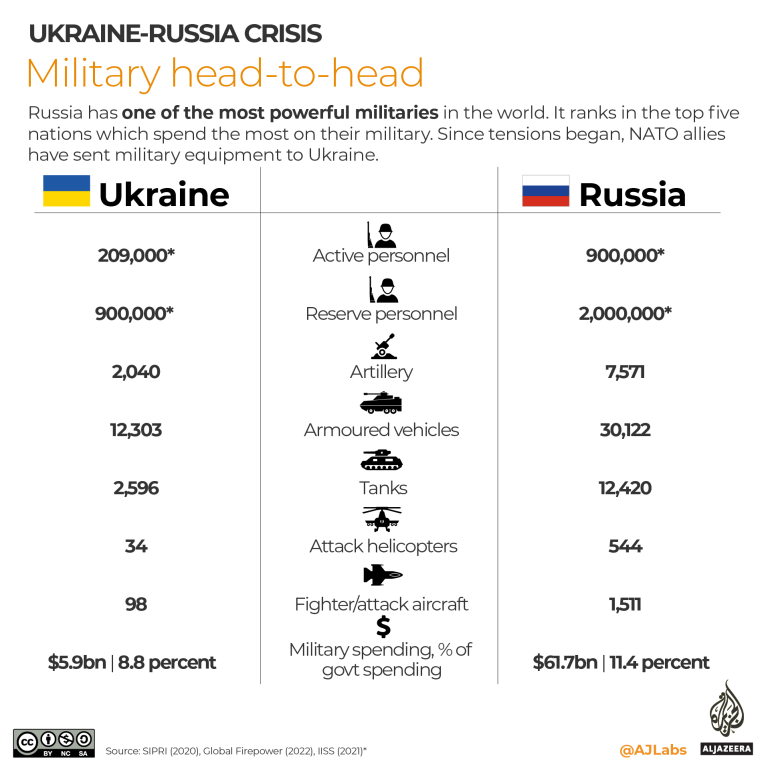
Possible invasion paths
Diplomatic talks have failed to stop an invasion. According to an analysis by the Center for Strategic Studies (CSIS) before the invasion, Russia was expected to advance into Ukraine via three possible routes depending on the Kremlin’s aims.

Northern Route
Russian forces could make advances towards Kyiv from the north, and if Belarus is amenable to the use of its road and rail systems, Russian troops could proceed into Ukraine from Mazyr, Belarus.
Central Route
Russia can also send troops from the Donetsk ‘republic’ towards Zaporizhzhia and Dnipro to expand its boundaries westwards.
Southern Route
If Russia seeks to secure freshwater supply for Crimea and block Ukraine’s access to the sea, it could make an advance from the south towards Kherson while armed forces advance towards Melitopol to meet with troops along the coast of the Sea of Azov. Russia may wish to create a land bridge to Crimea which would involve seizing the port of Mariupol.
Putin and NATO’s eastward expansion
NATO is the world’s most powerful military alliance comprising 30 members and a budget of 1.56 billion euros.
Founded in 1949, the North Atlantic Treaty Organization was initially created to curb Soviet expansion.
Russia opposes NATO bases near its borders and has asked for written guarantees that NATO will not expand eastwards. One of the Kremlin’s central demands is that Ukraine never be allowed to join NATO – a move it considers a red line.
Ukraine has expressed interest in joining NATO and in September 2020, Zelenskyy approved a security strategy which laid foundations for a partnership with NATO with the ambition of membership.
